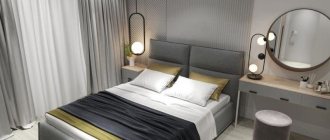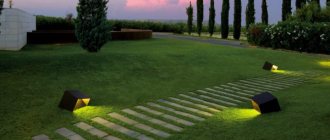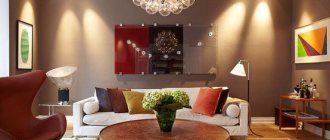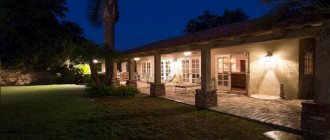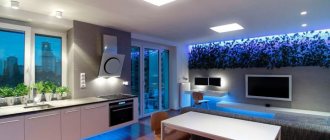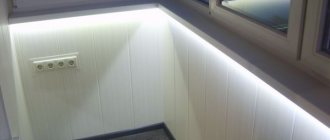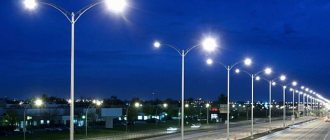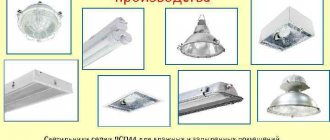The development of technology has led to a significant reduction in the cost of manufacturing artificial reservoirs. Thanks to this, everyone can afford their own swimming pool in the yard, on their personal plot or on the territory of sports and recreation complexes.
The operation of such facilities can be carried out not only during the daytime, but also after dark, which is associated with a certain danger for swimmers. Therefore, the organization of pool lighting is carried out in strict accordance with the requirements of regulatory documents.
Requirements and standards
Due to the fact that the lighting equipment is powered from the electrical network, and the water used to fill the pool is a conductor of electric current, their combined use causes a number of dangerous factors for humans.
To protect everyone’s favorite bathing procedure, lighting in artificial reservoirs must meet the following requirements:
- In view of the fact that injury to a person by a voltage of 220V can lead to death, a safe voltage of 12V should be used to power the lighting fixtures in the pool.
- Any lamps located under water or in close proximity to it must have the appropriate degree of protection - IP68. If they are installed above water or additional sealing means will be used, the protection index may be IP67. The last number in the marking indicates the moisture resistance indicator; the higher it is, the better the protection of the case from liquids.
- If lighting devices are immersed in water, all wiring must be equipped with high-quality electrical insulation and waterproofing. Especially at points of electrical connections and contacts.
- The installation method should provide for quick access to the devices in the future so that the light bulb or socket can be replaced in the event of a breakdown.
- The luminous flux from the lighting device in stationary pools should be diffuse in nature so that the entire surface of the water and the bottom of the bowl are systematically illuminated.
- There should be no glare on the surface of the water in the pool that blinds swimmers.
- The pool entry/exit area must be well lit to provide sufficient visibility for safe movement.
In addition, SNiP II-4-79 “Natural and artificial lighting” regulates the following indicators for illuminating water bodies.
The pool was built by ALLPOOLS
Table: dependence of lighting parameters on the purpose of the pool
| An object | Horizontal illumination, lux | Combined discomfort index UGR, no more | Ripple factor (flicker effect) |
| Fitness and fitness pools | 100-150, at water level | 24 | 20% |
| Swimming pools in baths, saunas, private | 100, at floor level | — | Not standardized |
| Shower rooms | 75, at floor level | — | Not standardized |
Failure to comply with the above parameters may cause a deterioration in the well-being of visitors to recreational or swimming pools, which can lead to disastrous consequences in the future. To ensure sufficient and comfortable visibility, various types of lighting or combinations of several are used at once.
Main conclusions
The organization of lighting plays an important role in organizing the space of a sports hall. If it is not lit correctly, athletes will not be able to perform at their best. Adequate lighting of the gym involves the use of diffuse daytime radiation. LED lamps are best suited for this. It is advisable to use several types of lamps. One type should be installed in the hall as the main lighting. The second type must be used as an additional light source.
Previous Lamps and lamps How to choose a lamp for flowers and indoor plants Next Lamps and lamps Housing and communal services lamps: a review of modern vandal-proof, energy-saving, automated lighting devices
No tags for this post.
Lighting type
All lighting devices are conventionally divided into outdoor and underwater lighting devices.
Depending on the tasks being solved, pool lighting is divided into:
- General – designed to ensure a normal level of visibility within the entire pool bowl. Lighting devices are installed on top or side of the bowl, in closed pools on the ceiling or wall, and in open pools on brackets, supports or other supporting structures. Due to its remote location, this type of lighting is characterized by a fairly high energy consumption.
General lighting
- Local - used to illuminate certain areas or locations that the owner wants to highlight against the general background. For example, steps, bas-reliefs, frescoes, decorative waterfalls, etc.
Local illumination
- Contour - placed along the perimeter of the bowl to highlight the contour of the reservoir in the design of the room or area. Contour lighting is widely used to highlight an intricate shape or create emphasis on multiple levels or depth.
Contour lighting
- Decorative – designed to decorate the pool, color lighting to create designer effects. Recently, decorative lighting has been implemented using RGB tape or fiber optics.
Decorative lighting
Organization of electrical wiring
The pool supply lines should be led from general electrical routes or distribution boards, from which the rest of the lighting equipment on the site is powered, illuminating both the architectural elements and the surrounding area. To switch from 220 V to 12 V and lower voltage, special adapters are used at branching nodes.
It is advisable to lay lines underground using high-quality insulation. Standard pool lighting requires two circuits - phase and neutral. If luminaires with the first protection class are used, then there are three wires, including a grounding wire. In this case, a special clamp is provided for lighting devices for connection to the grounding cable.
Types of lamps used
For each type of pool lighting, different types of lamps can be used. Each type has its own characteristics of installation and operation, so we will consider each of them in more detail.
Spot
Can be used as wall lights, for local lighting or general lighting for mass installation around the perimeter of the pool or at the bottom. Structurally, they are analogous to spotlights; sealed models are used for underwater spotlights, and classic lamps can be installed for external lighting.
Based on the type of location, spotlights are divided into built-in and surface-mounted. Built-in ones are installed in a special recess or niche on the wall of the pool or in the edge. For them, holes are pre-designed according to the dimensions of the lighting devices, and the wiring is laid so that the lamp is flush. Overhead lamps are located directly on the wall of the bowl and protrude beyond its boundaries.
Recessed and surface-mounted lamps
Spotlights for general lighting are placed deeper to the bottom so that they illuminate the entire thickness of the water; some can be placed at the bottom. They are placed at an equal distance from each other, on opposite sides they are installed in a checkerboard pattern to cover a larger area.
If the pool is not deep, spotlights can be placed closer to the surface of the water, but they must be completely submerged even with a minimum amount of liquid. Otherwise, they will shine directly into the eyes of swimmers.
An example of the location of spotlights
LED strips
LED strips are a flexible design with semiconductor elements evenly spaced on it, connected in series to the network. For safety reasons, a strip with a supply voltage of 12V is used for external lighting.
To power it, a power supply is used, selected according to the power of the lighting device. Along with monochrome models, RGB strips are also used, capable of producing various lighting effects.
LED strip lighting
Using LED strips, it is convenient to perform contour lighting of the pool, since the strip can be easily placed along the perimeter of the edge or on the wall. LED strips are easily glued to any surface using double-sided tape.
To be located even near a pool, such a lighting device must be protected from moisture. Therefore, to illuminate the reservoir, tapes in a silicone hose should be used or they should be placed in a special channel.
Alas, industrial organizations do not recognize LED strips as pool lighting due to an insufficient level of protection. In most cases, manufacturers give a parameter no more than IP67, while you need IP68. Therefore, they are most often used in home pools.
Fiber optic threads
They are polymer or glass fibers through which a light signal is transmitted, while the threads themselves emit light. This principle formed the basis for decorating decorative elements, creating interesting designs and exotic compositions.
Regarding the design of pool lighting, it should be noted that fiber optic lighting is in no way a source of electric current or voltage, and therefore is completely safe for humans.
Fiber optic backlight
Unlike other means of lighting, threads produce any color, can take any shape and be laid both outside and as underwater lamps. Fiber optic luminaires provide the most uniform illumination, and their installation does not require hydro- or electrical insulation.
Since the optical fiber itself does not set light vibrations, but is only their conductor, a remote-controlled projector is used to generate light. The projector is installed in a dry place as far away from water as possible, and the threads are connected to it and mounted in the pool.
In case of damage and failure of the optical fiber, it can be replaced even without draining the water. Despite the significant advantages of fiber optic lighting, its cost is several times higher than other analogues.
Overwater lighting
Overhead lighting of the pool involves installing lamps at a sufficient distance from the water. Depending on the location, a level of protection no less than that of underwater floodlights may be required.
Overwater lighting devices can be installed on the walls of the pool itself, on the edge, on the ceiling or walls. In addition to their main function, they can be used to decorate premises. Of course, there will be no decorative effect in the pool itself, since all the light will be spent on creating the design of the room.
Floating lamps
If all of the above types of lighting equipment need to be provided before the construction of pools, then floating lamps can be installed in a ready-made structure. Regardless of the design features of the reservoir, the floating LED lamp can be placed at any point you like.
Floating models are made in the shape of a ball and operate from a built-in battery, so they do not require a cable line to supply electricity, which ensures their autonomy.
Installation of the embed in the pool wall
Let's proceed directly to the installation of the mortgage. Place it on the outside of the body and trace along the outline with a pencil. Mark class=”aligncenter” width=”665″ height=”424″[/img]
An important point is to drill large holes for the embed and cable exit from the inside of the pool so as not to tear the acrylic coating.
However, since you made the markings from the outside, it is not possible to accurately guess the center of the embed from the inside of the bowl.
How can you get out of the situation? Very easy! First, use a thin drill to drill a hole from the outside according to class=”aligncenter” width=”720″ height=”245″[/img]
And only then from the inside, go through the acrylic body with a crown of the required diameter. Select the crown according to the width of the hole in the mortgage. There is no need to drill large “holes”.
To avoid burning the acrylic coating, do not forget to periodically wet the teeth of the crown.
Thus, you make all the holes in the wall of the pool. Next, mark the mounting for the headlight from the inside. Place it in the center of the hole and mark the fasteners.
In this case, the outermost ears or petals of the mortgage must be positioned strictly horizontally.
From the inside, use a drill and screwdriver to make the required number of holes.
Prepare the counter part of the mortgage for installation. To do this, a cable sleeve is first glued into it.
It will ensure the tightness of the wires running from the lamp to the junction box. The rubber seals are also glued into place.
At the same time, ensure the alignment of all holes and slots. Rubber bands are installed on both sides of the mortgage.
Further in the pool they will be pressed together and tightened with screws through the holes on the flanges.
The places where the flanges will be installed must be cleaned with a flap wheel.
Install the insert with screws from inside the bowl and press it against the wall by hand.
Before installing its reverse side, coat the circumference with sealant around all the places where holes were previously drilled.
Only after this, take the mating part of the mortgage and put it on the screws, tightening them evenly with a screwdriver.
As a result, you should have double protection - the rubber seal will be on both one and the other side of the pool.
This completes the installation of the mortgage.
Selection of light bulbs
There is a fairly wide selection of lighting lamps on the modern market, some of them are universal, others are not suitable for use in the pool.
The following models should be noted:
- incandescent lamps are the most expensive option in terms of device power and service life, light output is 8 - 10 Lm/W;
- fluorescent lamps - give a better luminous flux than incandescent lamps 25 - 50 Lm/W, but are quite capricious to environmental conditions;
- halogen lamps - provide a good luminous flux that penetrates into the thickness of the pool, regardless of the installation depth, but are characterized by a short service life and low luminous efficiency of 15 - 20 Lm/W;
- LED lamps are the most efficient type of lighting devices, they have the highest light output of 90 - 120 Lm/W and the longest service life.
The best option for underwater installation are LED spotlights or halogen lamps.
Types of pool lighting
A high-quality sealed lamp lasts a long time and always pleases the eye with the beauty of the resulting picture. On RGB LED models, you can choose any backlight color.
Of course, there are simpler and less expensive options for lighting pools.
This can include both external floodlights and floating sealed lamps.
However, these lighting methods are considered amateur and do not provide the same level of illumination and quality of light flux as professional underwater lamps.
A similar, but slightly different transformer is used for LED strips. It is mounted away from the pool.
Also, the entire supply circuit must be protected from leakage currents by a differential circuit breaker or RCD.
The cases are made of stainless steel or plastic. They must have a sealed design of at least IP68.
Lighting control
The control system allows you to use different operating modes, increase the brightness of the light, use all or only some groups of lighting fixtures, turn on colored lamps or monochrome lighting fixtures.
To control the brightness of home pools, you can use dimmers or other light output controls so that you can change the effects to suit your needs. In public and physical culture complexes, lighting should include several modes: for training, competitions and emergency lighting.
Useful tips
It is best to install lamps on the walls, not on the bottom. This will eliminate the need to drain all the water to replace lamps or make repairs. When installing the system, it is best to use light filters and dimmers. This allows you to change the brightness of the lighting and create different lighting effects.
Water-protected devices are mounted above the bowl. This will help prevent short circuits if moisture or condensation accidentally enters. It is better to purchase floating lamps with a matte shade, which allows you to create a soft lighting effect. The installation of pool lights should be left to a professional. Violation of installation rules will lead to rapid failure of the system and require expensive repairs.
We recommend watching a video on the topic:
Implementation of security systems
The presence of protective electrical devices is a prerequisite for organizing any water lighting system. At a minimum, experts recommend using transformers to connect strip lights and 12 V lamps. Even with a small total power of up to 28 W, having at least one 30 W transformer will not be superfluous. Again, the devices must have moisture-proof insulated housings, since they will have to be located close to the object of operation, for example, in a technological pit.
It is also worth including safety blocks and a stabilizer in the pool lighting system if you plan to use energy-intensive controllers.
How to choose LED strip
LED strips are a fairly common phenomenon. They are used for advertising signs and interior ceiling lighting, but they are not suitable for pool lighting. Here we need a more moisture-protected system.
Many people use LED strips, which are listed below. They immediately stop working or fail after 2-3 days. This is a consequence of incorrect selection. They are protected from moisture, such as steam, high indoor humidity or drops of water. But underwater, such insulation is not enough.
To make your own pool lighting, you should use the following LED strips:
They are designed to work underwater. The LEDs are completely contained in a sealed tube and can last for several years. For a pool you need to purchase lighting that operates on low voltage. 12 volts is ideal.
First of all, pay attention to the IP indicator - Index of Protection. This is an indicator of shock resistance (first digit) and water resistance (second digit). IP must be equal to or greater than 68.
If you want to install a backlight that will change its color, then you just need to purchase a strip with a control unit. Most often, it is controlled by a remote control.
However, simply attaching the tape to the pool and connecting it to a power source will not be enough. You need to think about additional security, since any equipment can fail.
